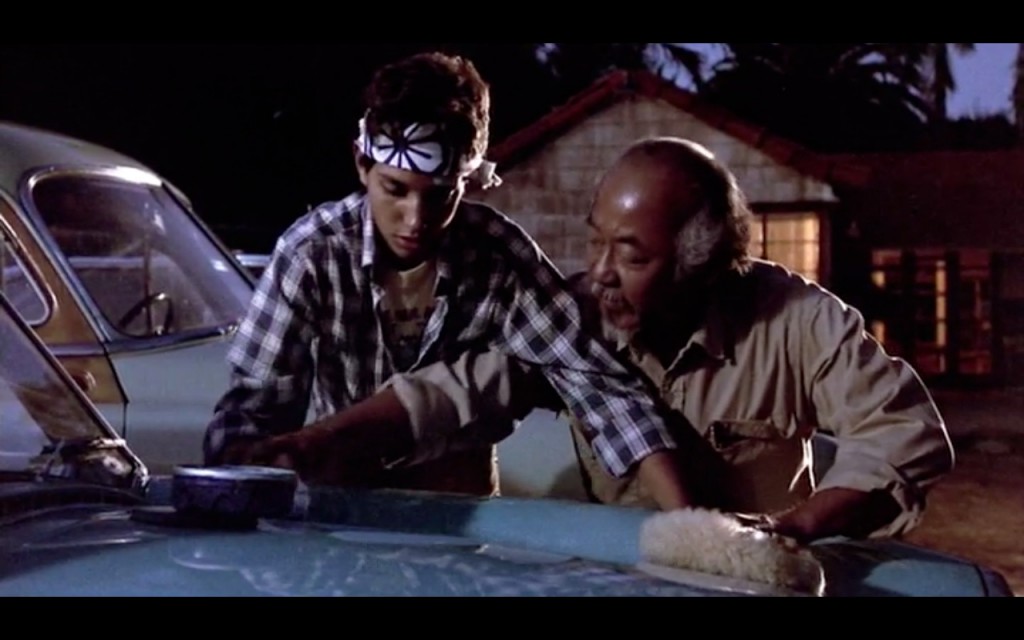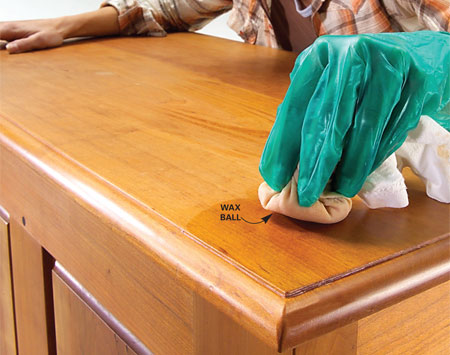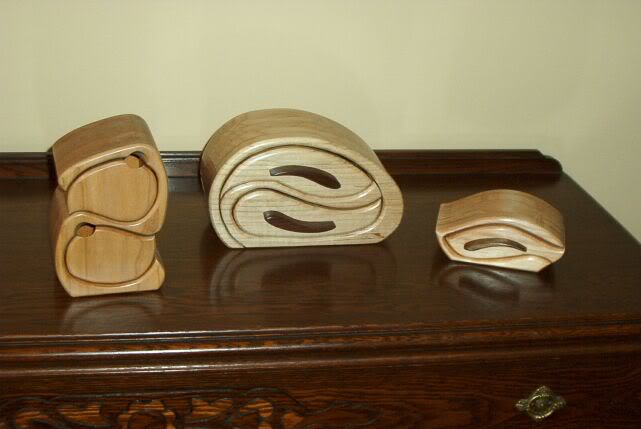Who could ever forget the memorable scene in the classic 1980’s movie the Karate Kid when Pat Morita was trying to teach Ralph Macchio the basics of karate. Rather than bring Daniel-san (Macchio’s character) to a dojo to learn the skills, Mr. Miyagi (Morita) brought Daniel-san to his home to do menial tasks. Painting the house and fences, sanding a deck and waxing cars. Not only did Daniel-san have to do these basic tasks, he had to do them a particular way in order to learn the basics of the martial art.
In much the same way, many woodworkers envision themselves building these awesome projects, but few envision the thrill of finishing that awaits them at the end of the build. For some woodworkers (this one included), they would rather have a root canal performed on their teeth than finish their pieces. Why? Is it the tedious task of sanding and scraping the saw marks off of the pieces? Sure. Is it that applying a smooth finish can be a real challenge? You betcha.
Much of this frustration may stem from the fact that these woodworkers see limited options when it comes to finishing. If the only finishing material you rely on is brushed on polyurethane, the fear of runs and sags is a reality. If you rely on oil finishes, how can you be sure that the finish won’t weep out of open-pored woods (Or worry that the oil soaked rags might catch fire in your shop)? Maybe it springs from the dreaded task of cleaning out spray equipment?
For those of you who worry, set your minds at ease. There is a finish that you may not have thought of that is simple to use, easy to apply and doesn’t change the appearance of your wooden projects. It’s wax.
Waxes have had a long and storied tradition in woodworking. From lubricating drawer runners and the soles of planes, their slippery nature is well known. But, waxes have also been used as finishes and topcoats for centuries on wooden projects, and they are just as useful as today as they were all of those years ago.
Wax is a great finish for items that are primarily put on display, but don’t get a lot of use. Turned candlesticks, sculptures and small boxes are excellent candidates for wax.
To use wax as a finish, just apply a decent sized amount – something about the size of a golf ball – into the middle of some soft cloth. Old t-shirts are great for this. Wrap the wad of wax up in the cloth and form it into a pad, kneading it into the cloth. As you rub this cloth-covered glob of wax over the furniture, it will melt with the warmth from your hands and work through the fabric’s weave, applying a fine coat on the surface of the project. Keep working the wax into the piece, and you’ll notice a haze building on the surface. Once you get the piece good and covered, take a clean cloth and buff the surface up to a soft luster.
I have had a lot of success first applying a coat of shellac to the piece and buffing that down with some 320 grit sandpaper before buffing the wax on. That helps build some additional protection into the finish while making for a much smoother surface.
Most paste furniture waxes are made from petroleum-based waxes such as parafin, but higher-quality furniture waxes will contain a good portion of beeswax or – even better – carnauba wax in the mix. Carnauba wax is a very hard wax harvested from palm trees and offers a more durable surface. Additionally, high-end waxes such as Liberon or Briwax also offer tinted waxes, which can subtly change the color of the wood they are applied to.
The downsides? Wax does not form a hard surface on your project, so it will offer only limited protection. So, it’s probably not a good idea to use just wax on the surface of a table. Also, it offers nearly no protection from water.
While it may not be the perfect wood finish, wax provides a finish that’s both pleasing to the eye and the hands, and it’s very easy to apply to your project. And, with a new finishing option in your repertoire, you are well on your way to mastering finishing.





Right on Tom! My favorite finish for small projects is shellac followed by wax applied with 0000 steel wool and buffed with a clean cloth. It gives a smooth feel and warm look with a nice soft luster.
I love using wax to finish. It’s pleasing to apply, deepens colours and contrast, and still leaves something of that raw feel to open grained woods.